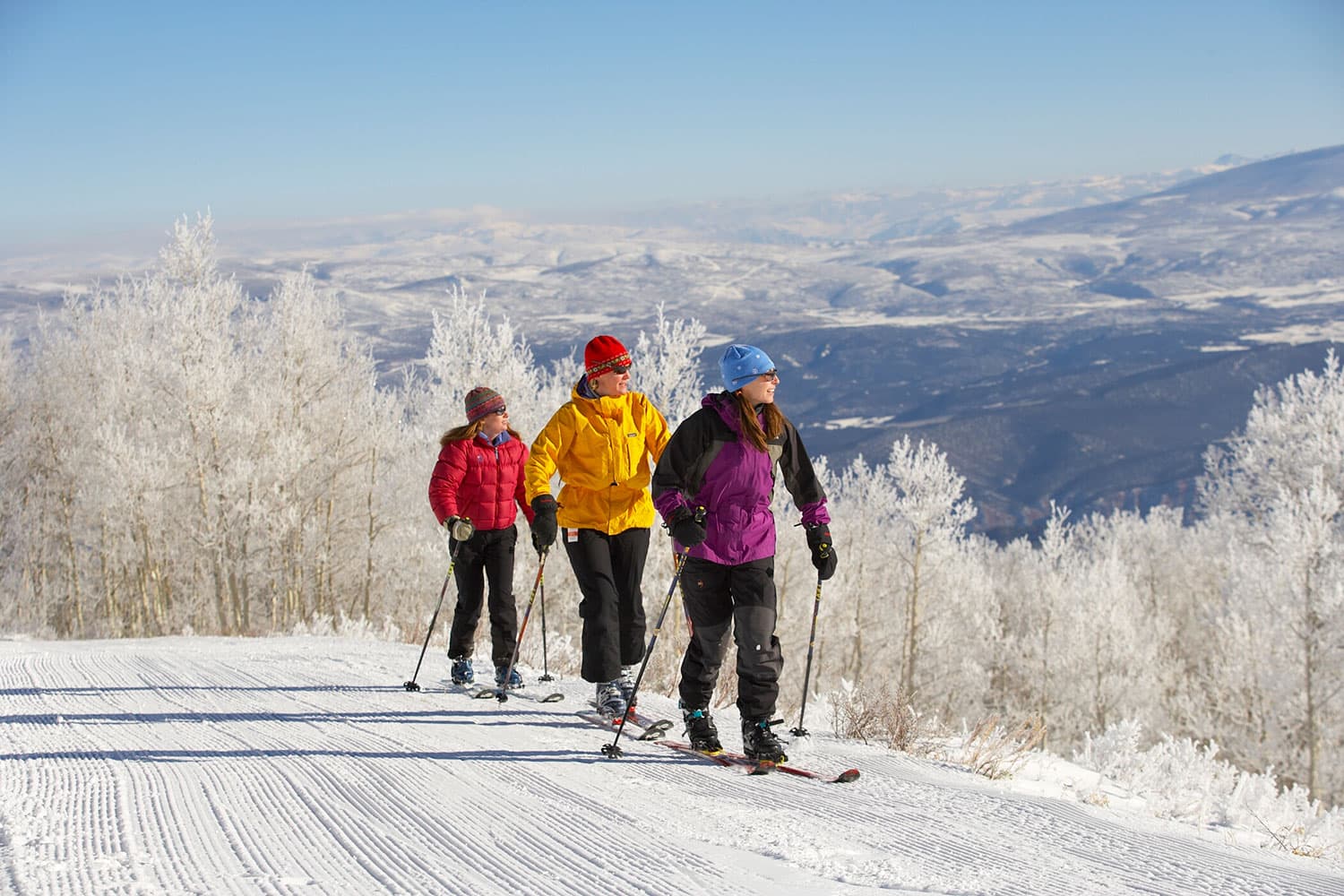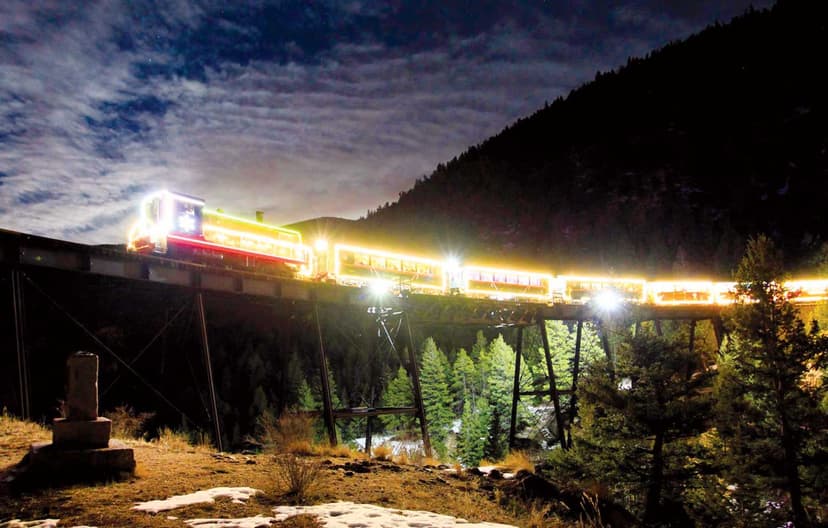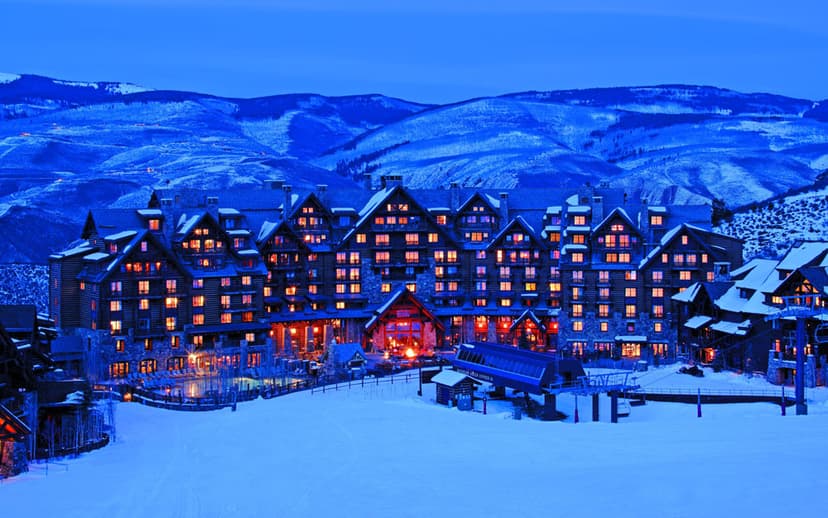What is Snowshoeing?
The idea of snowshoeing might call to mind images of cartoon characters strapping tennis rackets to their feet and trudging through vast piles of snow. In reality, snowshoeing is more or less hiking on snow-covered trails, with the use of basic, specialized gear to help distribute your weight atop the snow.
What is Cross-Country Skiing?
Cross-country skiing (also called "Nordic skiing") distinguishes itself from its slightly flashier cousin downhill skiing in a few ways. Cross-country skiing usually takes place over gentler terrain that has been groomed to make it easier to traverse (although you can certainly glide down hills on cross-country skis as you encounter them). These groomed trails are often referred to as "corduroy." The effort required in Nordic skiing involves the coordinated movement of skis and poles — much like being on an elliptical machine — to propel you across the snow on rolling, flat or uphill terrain.
Cross-country skiing has similar advantages as snowshoeing: access to pristine, snow-covered scenery, tranquil trails and a great cardiovascular workout. And you don't need previous skiing or snow sport experience to try either activity!
Getting Started
Step 1
Select a location for your snowshoeing or cross-country skiing adventure. See below for options and ideas.
Step 2
Find a nearby shop to rent or buy the gear you’ll need. Ski and snowboard rental shops and outdoor gear retailers are the best places to inquire about snowshoe and cross-country ski rentals. Here is a list of gear you will need to bring, buy or rent:
- Snowshoes or cross-country skis
- Ski/trekking poles
- Ski boots (for cross-country skiing) or waterproof hiking boots (for snowshoeing; rental shops often have boots available, though your own may be more comfortable)
- Gaiters (these wrap around the top of your boot and the bottom of your pants to keep snow out)
- Wool or synthetic-blend socks (not cotton)
- Layers of clothing: thermal underwear (tops and bottoms), breathable long-sleeved shirt or fleece jacket, waterproof jacket or shell and snowpants
- Waterproof gloves
- Warm ski cap
- Polarized sunglasses or goggles
- CamelBak or other water system
- Daypack with extra socks, sunscreen, first-aid kit, camera and snacks
Step 3
Check your driving route. Colorado does a great job of keeping roads clear of snow in the winter, and sometimes you'll barely see any powder at all on the way to your destination. But if you're not accustomed to driving in wintry conditions, make sure you're comfortable with road conditions by consulting resources like Cotrip.org. You might also find renting an AWD vehicle helpful and, depending on where you're going, you may be able book a shuttle. Another option is to stay close to the area you want to snowshoe or cross-country ski in. There are plenty of ways to ensure you make the most of your snowy excursion!
Step 4
Depending on the location you’ve selected (see below), consult the rental shop, Nordic center or visitor center for advice on trails that are appropriate for your experience level. Some will even have trail maps you can carry with you. Then, simply gear up and head out on the trail of your choosing.
Step 5
Give yourself time to get into the groove. On showshoes, you’ll feel a bit like an awkward Bigfoot at first, but you’ll quickly get the hang of it. On cross-country skis, expect some huffing and puffing to start, but it won’t take long before you find a rhythm, as you kick, stride and glide across the snow. A lesson may help you make the most of your cross-country ski experience.
Where to Snowshoe & Cross-Country Ski in Colorado
Nordic Centers
Many of Colorado’s ski areas and resorts have designated areas for cross-country skiing and snowshoeing, which are a great way to get started on a well-marked and maintained network of trails. Check out Colorado Nordic Centers: Snowshoeing and Cross-Country Skiing for suggestions and for information on lessons (including adaptive lessons).
State & National Parks
The visitor centers at state and national parks across the state will be able to answer your questions about where snowshoeing and cross-country skiing are allowed and where the best trails are located. For starters, read our list of 5 Colorado State Parks Perfect for Winter
Ranches & Tour Locations
Guest and dude ranches and private tour guides offer access to a range of scenic terrain. Check out the members of the Colorado Cross Country Ski Association for a complete selection.








